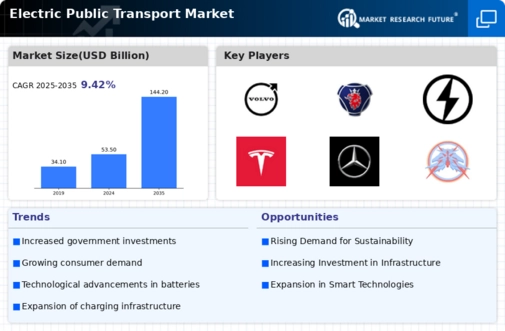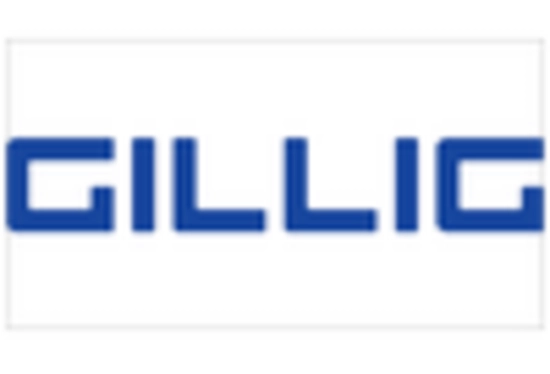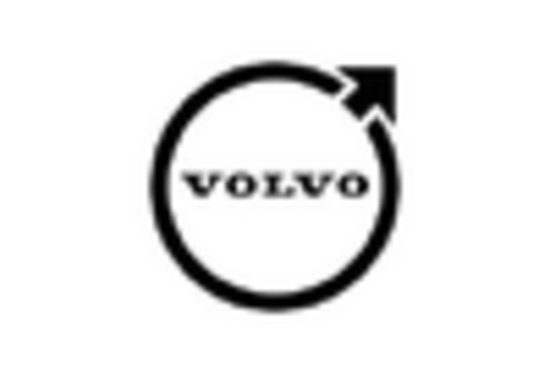Government Policies and Funding
Government policies play a crucial role in shaping the Electric Public Transport Market. Many countries are implementing stringent emissions regulations, which compel public transport operators to transition to electric vehicles. Additionally, substantial funding initiatives are being introduced to support the development of electric public transport systems. For example, various governments have allocated billions in subsidies and grants to facilitate the purchase of electric buses. This financial backing not only lowers the initial investment barrier but also promotes research and development in electric transport technologies. Consequently, the Electric Public Transport Market is likely to witness accelerated growth as public transport authorities align with these policies.
Integration of Smart Technologies
The integration of smart technologies is transforming the Electric Public Transport Market. Innovations such as real-time tracking, mobile ticketing, and data analytics are enhancing the efficiency and user experience of electric public transport systems. These technologies not only streamline operations but also provide valuable insights into passenger behavior and demand patterns. As cities adopt smart city initiatives, the incorporation of electric public transport becomes increasingly attractive. The potential for improved service delivery and operational efficiency may encourage more investments in electric fleets, thereby fostering growth in the Electric Public Transport Market.
Urbanization and Population Growth
Urbanization and population growth are driving factors in the Electric Public Transport Market. As cities expand and populations increase, the demand for efficient and sustainable public transport solutions becomes more pressing. Electric public transport systems are seen as a viable alternative to reduce congestion and pollution in urban areas. According to recent studies, urban areas are expected to account for over 70 percent of the global population by 2050, necessitating a shift towards electric solutions. This trend suggests that municipalities will increasingly adopt electric buses and trams to meet the rising demand for public transport, thereby propelling the Electric Public Transport Market forward.
Environmental Concerns and Climate Change
The growing awareness of environmental issues and climate change is significantly influencing the Electric Public Transport Market. As public consciousness shifts towards sustainability, there is an increasing demand for cleaner transport options. Electric public transport systems are recognized for their potential to reduce greenhouse gas emissions and improve air quality in urban settings. Research indicates that electric buses can reduce emissions by up to 80 percent compared to their diesel counterparts. This environmental imperative is prompting cities to invest in electric fleets, thereby enhancing the appeal of the Electric Public Transport Market as a sustainable solution for future transport needs.
Technological Advancements in Electric Vehicles
The Electric Public Transport Market is experiencing a surge in technological advancements, particularly in electric vehicle (EV) design and battery efficiency. Innovations such as solid-state batteries and enhanced charging infrastructure are likely to improve the performance and range of electric buses and trams. For instance, the introduction of fast-charging stations is expected to reduce downtime, making electric public transport more viable. As battery costs continue to decline, the total cost of ownership for electric public transport systems is projected to become more competitive with traditional diesel options. This shift may encourage more municipalities to invest in electric fleets, thereby expanding the Electric Public Transport Market.

















Leave a Comment